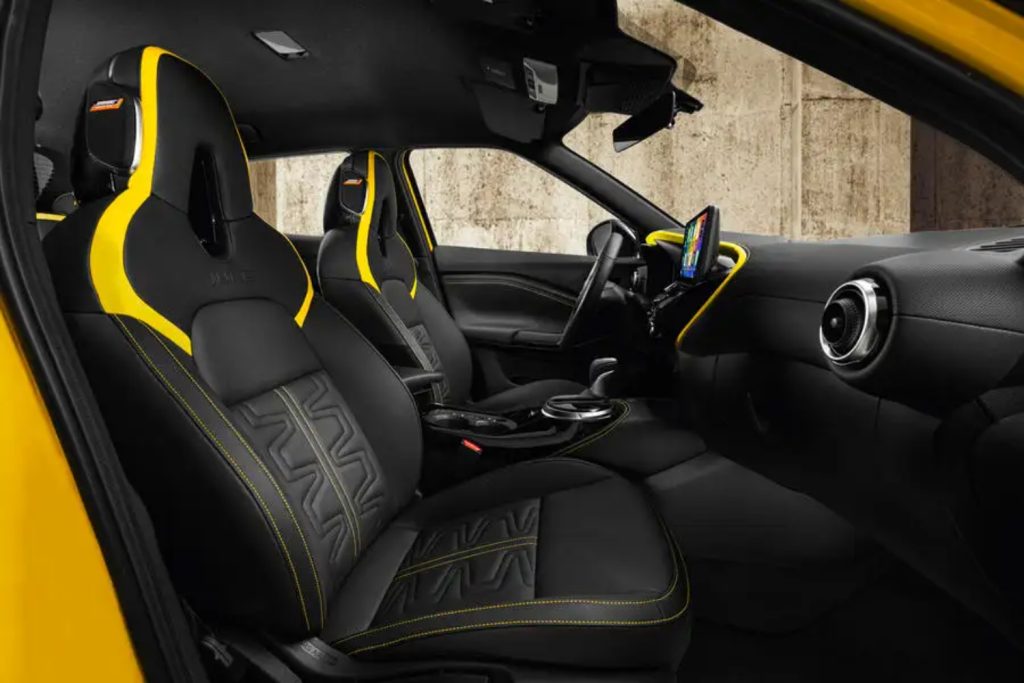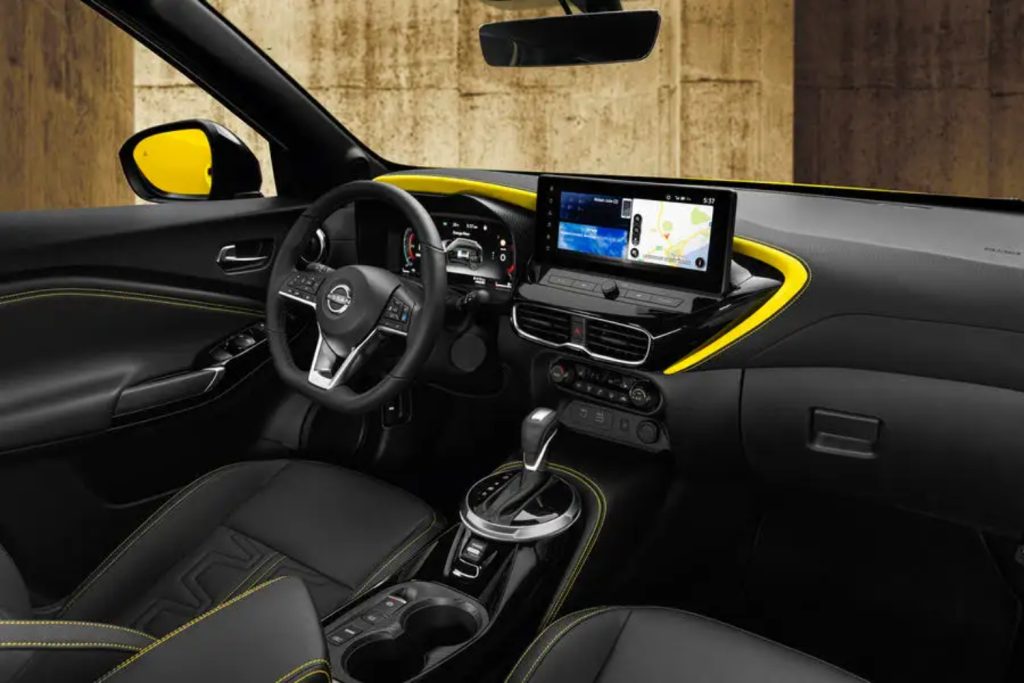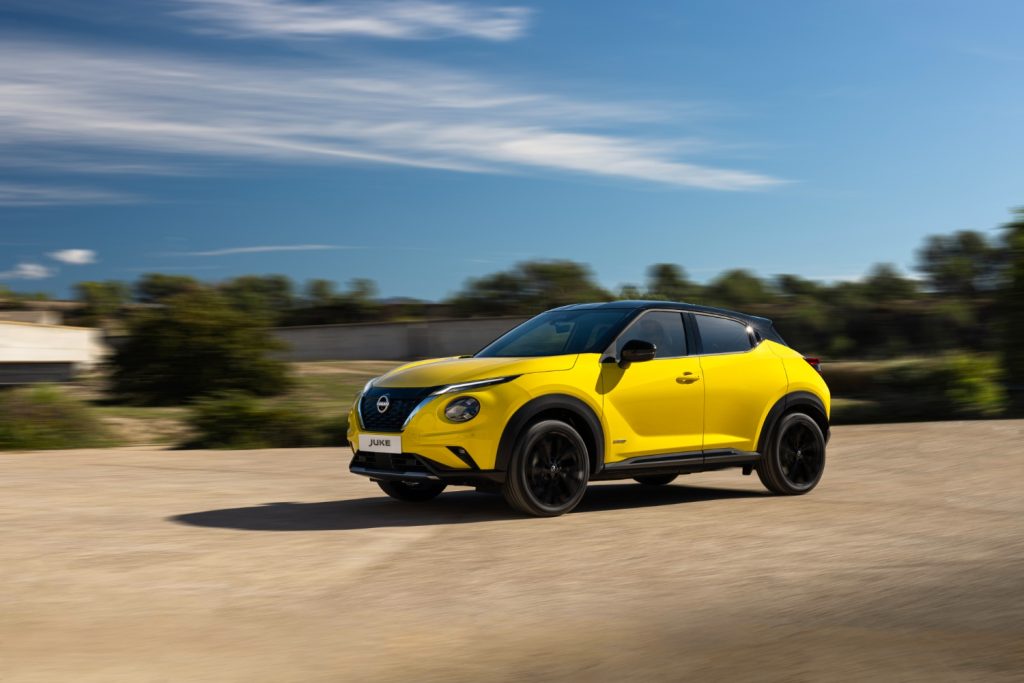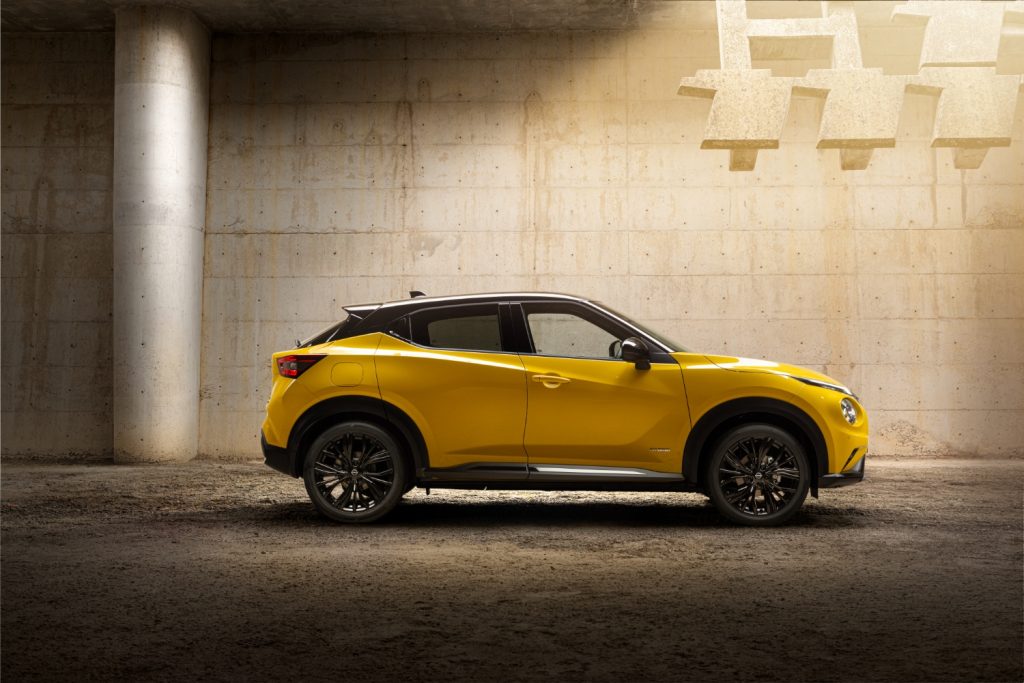Nissan has decided to proceed with a mid-cycle update of the current generation of the Juke, and for that it has chosen to respond to two of the most requested demands from its customers.
The update of the Japanese brand’s crossover also includes the introduction of an additional range called N-Sport, which highlights the dynamic qualities of the Juke, both in the exterior and interior details.
The new N-Sport version combines the yellow exterior with black details on the roof, exterior rearview mirrors, wheel arch inserts, grille, and A and B pillars, allowing for a more sporty visual impact.
The new N-Sport version combines the yellow exterior with black details on the roof, exterior rearview mirrors, wheel arch inserts, grille, and A and B pillars, allowing for a more sporty visual impact.
In addition to introducing the new yellow body color, Nissan’s designers and engineers have made significant changes to the interior of the Juke to enhance the onboard living environment, with a redesigned center console and instrument panel.
The cabin also benefits from new materials and finishes, as well as greater connectivity, highlighted by a 12.3″ touchscreen that is tilted towards the driver to place the touch controls at the far end of the screen within comfortable reach, but also to improve the cockpit-like feeling that Juke customers truly enjoy.

In addition, the refreshed Nissan Juke also features a new fully digital instrument panel with a customizable 12.3″ screen.
The return of the N-Sport is noticeable in the seats, with inserts in matching yellow recycled Alcantara with the new exterior paint that covers the upper exterior of the seat, cutting through the center of the seat on the side supports. The seat base and backrest are padded in a distinct pattern, while the “Juke” is engraved at shoulder height on the backrest. The yellow stitching completes the bold effect.
There are also new seats for the N-Connecta, N-Design, and Tekna versions, with improved comfort. The new N-Connecta seats feature a new fabric called Kira Melange, which consists of PVC with fabric details to complement the patterned inserts.

In terms of engines, Nissan has not made any changes, so the updated Juke continues to have a gasoline engine that uses a 1.0-liter, three-cylinder DIG-T engine with a turbocharger, which produces 117 horsepower and 180 Nm of torque, available with a 6-speed manual transmission or a 7-speed sport dual-clutch transmission (DCT) and a driving mode selector (Eco, Standard, Sport).
The electrified option is the Juke Hybrid, which uses a combustion engine that delivers 94 horsepower and 148 Nm of torque, combined with a 49 horsepower and 205 Nm of torque electric motor, supported by a 15 kW high-voltage starter/generator, which operates through an inverter and a 1.2 kWh liquid-cooled battery.

The net result is a powertrain that provides 25% more power than the current gasoline engine option, with a fuel consumption reduction of up to 40% in urban cycles and up to 20% in combined cycles.
Nissan has already announced that the arrival of the updated Juke is imminent, especially since the model is already being produced at the Sunderland factory in the United Kingdom, where over 1.3 million units have been built since the launch of the Juke in 2010.

“With such a clear demand from our Juke customers, we had to listen to them. We took the opportunity, in the middle of the Juke’s lifecycle, to make some other changes that would improve comfort, convenience, and the overall living environment for drivers and passengers,” said Arnaud Charpentier, Regional Vice President, Product and Pricing Strategy, AMIEO region at Nissan.










